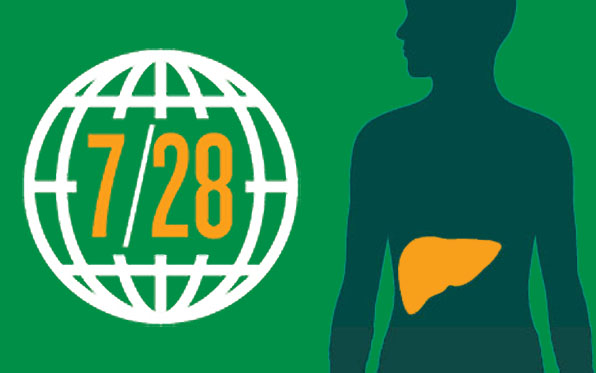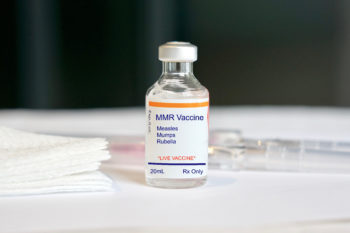They kill 4,000 people in the world every day.
The good news is that hepatitis A and B viruses can both be prevented by getting vaccinated. There is no vaccine for hepatitis C, but effective treatment is available.
However, many people with long-term Hepatitis B and C infections do not know that they are infected until they develop complications.
July 28 is World Hepatitis Day and County Health and Human Services Agency officials are urging the public to get immunized and tested to prevent the spread of these potentially deadly diseases.
“The number of hepatitis A and B cases has significantly declined since the vaccines became available,” said Wilma Wooten, M.D., M.P.H., County public health officer. “The drop in the rates of infection is due to immunization efforts.”
According to the Centers for Disease Control and Prevention, over the last 20 years, there has been a 90 percent decrease in cases of hepatitis A and an 80 percent drop in hepatitis B cases in the United States.
Hepatitis A, B and C are distinctive viral diseases that affect the liver. They can be serious and result in lifelong medical problems or even death.
Hepatitis A is highly contagious and is found in the stool of the infected person. It is spread through exposure to contaminated food or water or by certain types of intimate contact. More than 80 percent of adults infected with hepatitis A will experience symptoms, but often children do not have symptoms and could still spread the virus to household and other close contacts.
According to the CDC, about 20,000 people in the U.S. contract hepatitis A each year. In 2014, there were 15 hepatitis A cases in San Diego County.
The best way to prevent hepatitis A is by getting the vaccine, which the CDC recommends for people 12 months of age and older. The vaccine is also recommended prior to traveling to certain countries.
Hepatitis B can cause chronic hepatitis and cirrhosis, a potentially fatal liver disease. Hepatitis B is the cause of a majority of liver cancers. The virus is spread when blood, semen, or another body fluid from an infected person enters the body of someone who is not infected. This can happen through intimate contact, or by sharing needles, syringes, or other drug-injection equipment. It can also be transmitted from mother to baby at birth. The CDC recommends the hepatitis B vaccine for all babies, beginning with the first dose given at birth.
Other people who need hepatitis B vaccine include:
- Children and teens younger than age 19, who haven’t been vaccinated
- Anyone who has a sex partner with hepatitis B
- Anyone being evaluated or treated for an STD
- Men who have sex with men
- People who share needles used to inject drugs
- Anyone who lives with someone who has hepatitis B
- People with chronic liver disease
- People with HIV infections
In 2013, an estimated 20,000 persons in the United States were newly infected with hepatitis B. The rates are highest among adults, particularly males between 25 and 44 years of age. In San Diego County, there were 978 hepatitis B cases in 2014.
Asian and Pacific Islanders make up less than five percent of the population, yet they account for more than half of all cases of chronic hepatitis B in the United States. Even Asian and Pacific Islanders born in the United States may be at risk for hepatitis B if their parents are from countries where hepatitis B infection is common. The CDC recommends hepatitis B testing for all people born in countries where hepatitis B is common, people born in the United States who have at least one parent from one of these countries and people who live with someone who has hepatitis B. If testing is negative, these individuals should be vaccinated against hepatitis B.
Hepatitis C is a blood-borne virus. Today, most people become infected with hepatitis C by sharing needles or other equipment used to inject drugs. Chronic hepatitis C is a serious disease than can result in long-term health problems,liver cancer or even death. The best way to prevent hepatitis C is by avoiding behaviors that can spread the disease, especially injecting drugs.
The CDC estimates that between 2.7 and 3.9 million people in the United States have chronic hepatitis C and most of them do not know that they are infected because they have no symptoms. More than 75 percent of adult hepatitis C infections in the U.S. are in adults born between 1945 and 1965 (“baby boomers”). Therefore, the CDC recommends testing for hepatitis C at least once for anyone in this age group; regardless of other risk groups, get tested once for hepatitis C. Although 2,502 newly identified cases chronic hepatitis C cases were reported in San Diego last year, many more San Diegans are expected to have the infection and not know it. The sooner you are tested, the sooner that hepatitis C is detected and treated.
Sometimes there are no symptoms of hepatitis A, B or C in the first weeks after infection—the acute phase. But when they happen, the symptoms of types A, B, and C may include:
- Fatigue
- Nausea
- Poor appetite
- Belly pain
- A mild fever
- Yellow skin or eyes (jaundice)
“Viral hepatitis can be prevented. If you have not been vaccinated or tested, do it now,” Wooten said.
People with a medical provider should get tested and vaccinated through their primary care physician. People with no medical insurance can get tested at one of the County’s four STD clinics, which offer treatment for most STDs and vaccines for hepatitis A and B. To make a same-day appointment, call (619) 692-8300.
For more information about hepatitis, visit the Centers for Disease Control and Prevention.





